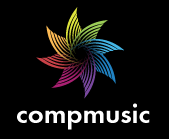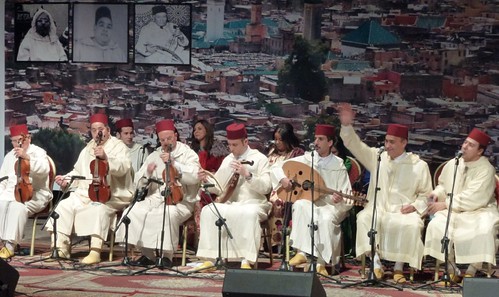Arab-Andalusian Music
On February 2013 I made a trip to Morocco, together with Mohamed Sordo, to attend an Andalusian music festival in Fez and to meet with the musician and musicologist Amin Chaachoo in Tetouan. This was the first trip to Morocco in the context of CompMusic and the objective was to stablish contacts and to decide the first steps to take in our research on Andalusian music, which is one of the five music cultures that we want to focus on.
The Andalusian classical music is very much alive in the Maghreb and its origins go back to the times of Al-Andalus. This musical tradition has evolved differently in the different parts of the Maghreb, being in Morocco where musicologist claim that it has better maintained some of its original characteristics. The cities of Fez and Tetouan are two major centers for the Moroccan Andalusian music (known there as Musiqa Al-Ála).
In Fez we went to a few concerts of the 18th Festival of Moroccan Andalusian music. We attended five concerts of classical orchestras, the traditional ensemble used in Andalusian music, and I recorded some representative fragments that I have uploaded to Freesound (Andalusian music pack).
Andalusian music is a classical tradition that has been maintained orally for hundreds of years and that has a well defined repertoire and set of formalisms. The core-structuring concept is the nawba (named nubah in the south of Morocco). Each nawba is on a tab' (which is similar to the concepts of maqam or mode) and is structured as a sequence of five myazen (plural or mîzân), each one on a particular rhythmic pattern. To perform a complete nawba it would take very long, so in each of the concerts we attended they just played one mîzân of a particular nawba. Each mîzân begins with an instrumental prelude and is followed by a number of sung poems (sana'i) which include instrumental accompaniment and short instrumental interludes.
The instruments of the Andalusian classical orchestras can change a bit but there is a set of core instruments in most of them. The orchestras I heard included voice soloists, oud, rebab, darbouka, tar, qanun, kamenjah (violin and viola), cello, piano, and all the players also sang (photo of some instruments). The music is fundamentally vocal but the instruments have a very important supporting role and in every concert there were quite a few instrumental solo passages.
The oud used is the arab oud, which is a bit bigger than the turkish one and it is tuned a bit lower (oud solo fragment). The rebab has two strings and is quite different from the rebabs I have seen in other arab countries (photo). The kamenjah (violin) is the most prominent instrument and the way the performers hold the instrument and their playing technique (photo) is quite different from other music traditions (kamenjah solo fragments: 1, 2, 3, 4). The percussion (darbouka and taarija) has a supporting role, thus it is present all the time. The piano is used by some groups and it is basically used as a monophonic instrument (piano solo). Most of the instrumental fragments are played by the whole orchestra (instrumental fragment). The voice is the main component of the music, most of the performers sing together (chorus fragments: 1, 2, 3, 4, 5) and some passages are sang by a soloist (voice solo fragments: 1, 2, 3, 4, 5).
The meetings with Amin Chaachoo in Tetouan were specially interesting and useful and we also had the opportunity to attend a concert of one of the orchestras he plays in, the Tetouan-Asmir Orchestra (recordings). Amin is an active musician and musicologist and he has recently written one of the few books that describes the musical theory of the Andalusian music. The first version of the book was in arab but there is a spanish translation (La música andalusí: Al-Ála’, Chaachoo 2011) and he is working on an updated and enlarged version in french. He has a good collection of books and recordings of Andalusian music and thus he will be a great source of information for our research.
Andalusian music has a special significance for me as a spanish person; it is the only art music tradition that originates from the spanish peninsula (even though it is not alive in Spain anymore). It would be great if with our research we could help preserve and disseminate this great music tradition.



